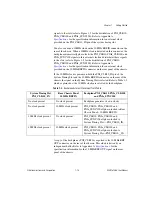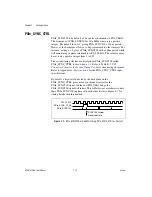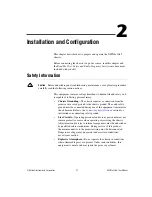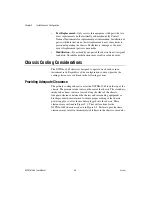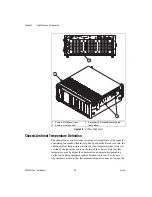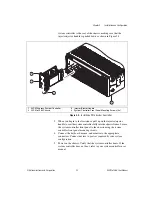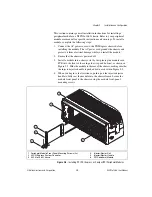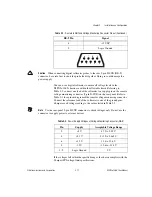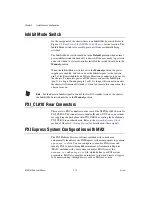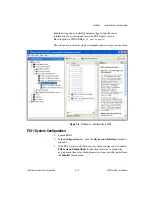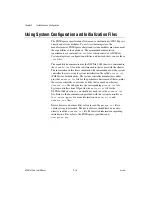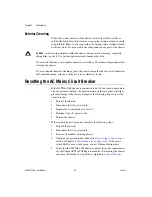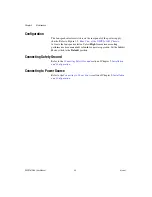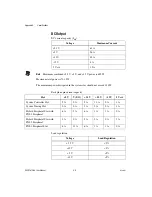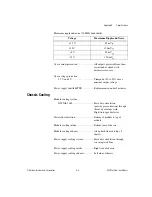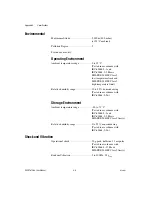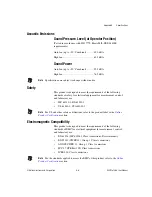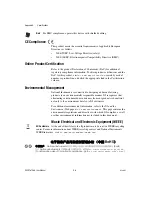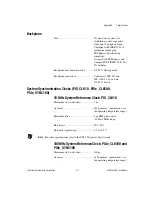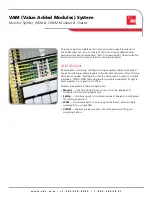
Chapter 2
Installation and Configuration
2-12
ni.com
Inhibit Mode Switch
On the rear panel of the chassis there is an Inhibit Mode switch. Refer to
Figure 1-2,
Rear View of the NI PXIe-1065 Chassis
, for the location. The
Inhibit Mode switch is recessed to prevent it from accidentally being
switched.
The Inhibit Mode switch should be in the
Default
position when normal
power inhibit switch functionality is desired. If the user needs to power on
a chassis without a system controller installed the switch should be in the
Manual
position.
When the Inhibit Mode switch is set to the
Manual
position, the power
supplies are enabled, and you can use the Inhibit signal (active low) on
pin 5 of the Remote Inhibit and Voltage Monitoring connector to power off
the chassis. To remotely power off the chassis, connect the Inhibit pin
(pin 5) to a Logic Ground pin (pin 1 or 9). As long as this connection exists,
the chassis will remain off (standby); when you remove this connection, the
chassis turns on.
Note
For the Remote Inhibit signal to control the On/Off (standby) state of the chassis,
the Inhibit Mode switch must be in the
Manual
position.
PXI_CLK10 Rear Connectors
There are two BNC connectors on the rear of the NI PXIe-1065 chassis for
PXI_CLK10. The connectors are labeled IN and OUT. You can use them
for supplying the backplane with PXI_CLK10 or routing the backplane’s
PXI_CLK10 to another chassis. Refer to the
section of Chapter 1,
, for details about these signals.
PXI Express System Configuration with MAX
The PXI Platform Services software included with your chassis
automatically identifies your PXI Express system components to generate
a
pxiesys.ini
file. You can configure your entire PXI system and
identify PXI-1 chassis through Measurement & Automation Explorer
(MAX), included with your system controller. MAX creates the
pxiesys.ini
and
pxisys.ini
file, which define your PXI system
parameters. MAX also provides an interface to route and reserve triggers
so dynamic routing, through drivers such as DAQmx, avoids


